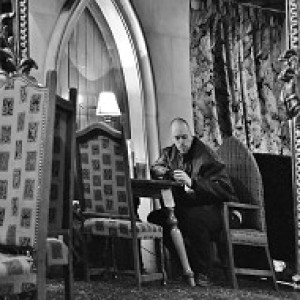The Wilderness Years
Film night, and it's another which has managed to elude my attention until now; Sean Penn's adaptation of the true story of hiker Christopher McCandless, Into The Wild.
In 1990, McCandless graduated from university, and in an apparent fit of Kerouac-esque impulse, decided to donate his life savings to charity and hitch-hike across America on a voyage of self-discovery, without even telling his family. After a two-year journey, he decided that his true desire was to get away from civilisation, explore the unknown, and live in the wilderness; to this end, he hitched his way to the town of Healy in central Alaska, got a lift out to the furthest extremity of paved road on the town's outskirts, and then armed only with the most basic outdoors gear and a bag of rice - without a map or even a compass - he set out westward into the tundra.
McCandless hiked twenty miles westward along a game trail - forty miles out of Healy in total - until he discovered an abandoned city bus at the side of the trail, and decided to make it his home. For four months in the summer of 1992, McCandless managed to survive and record his thoughts, but his inexperience in hunting game took its toll, and when starvation set in, he attempted to return to Healy only to find that the Teklanika river - which had been little more than a sluggish stream when he crossed it westward in spring - had been swollen by the summer thaw into a wide, fast and deep torrent, effectively trapping him in the wilderness to which he'd come for freedom. After a further period of starvation, he died in the bus in late summer.
Knowing the basics of the story prior to watching the film, I admit that I was prepared to have little sympathy with McCandless. While his suffering and death were undoubtedly tragic, and his motivation for going to Alaska certainly very worthwhile to him, it's difficult to identify with that middle-class, suburban urge to "discover oneself" if you don't share that background; besides which, fucking off into the middle of one of the harshest landscapes on earth with little more than a spare pair of pants comes across as a feat of no mean dipshittery. However, I quickly found that Sean Penn's careful storytelling and direction did manage to tap a well of understanding for McCandless in me. With the Alaska scenes shot on location at the very bus where he lived and died, you can't help but marvel at the natural beauty of this spot that he "discovered" and share his emotions at every turn, from the elation of standing on the bus's roof and shouting his arrival into the empty expanse of the forests and mountains, to the terror and despair of realising that the swollen river has condemned him to death. Whatever your feelings on McCandless and his ill-advised decisions, those polarised emotions - and the knowledge that he went through them all alone twenty years ago - stay with you long after the credits have rolled.
After watching, I soon discovered via the magic of Google that many outdoor types around the world have been inspired by the film to make the trek out to "the Magic Bus" (as McCandless called his final home), to see the place where he died and pay their respects. Some have returned with exhilarating tales; some haven't returned at all, with many being killed crossing the still-treacherous Teklanika river. Ultimately, one of the most experienced pilgrims of this journey offers some advice for new travellers on his website which I think serves as the most fitting epitaph for McCandless and his adventurous soul:
"There is nothing on that bus worth losing your life for."
- 0
- 0
- Nikon D3100
- 1/100
- f/5.6
- 55mm
- 400

Comments
Sign in or get an account to comment.


